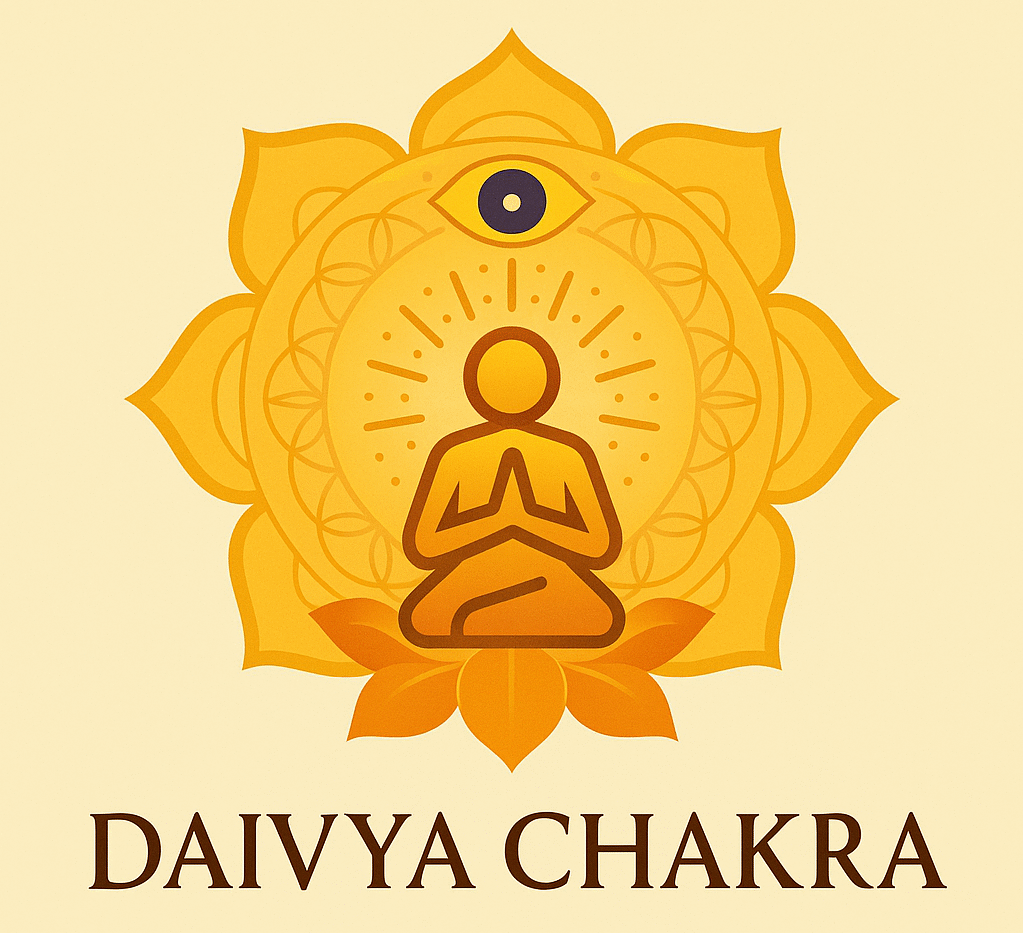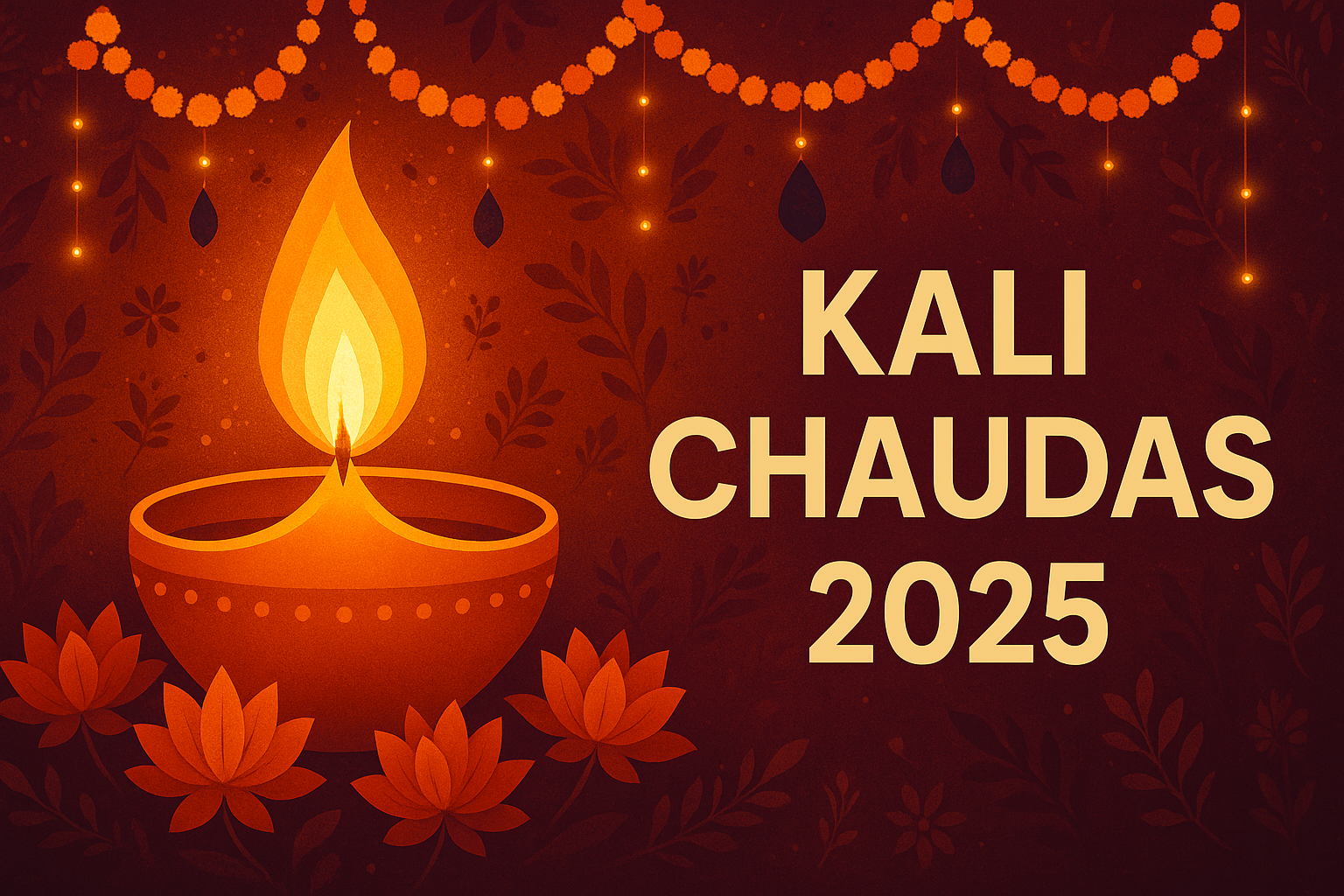Kali Chaudas, also known as Naraka Chaturdashi or Chhoti Diwali, is one of the most important days in the Diwali festival. It is celebrated on the 14th day (Chaturdashi) of the Krishna Paksha in the Hindu month of Kartik.
The name “Kali Chaudas” comes from two Sanskrit words Kali meaning dark or the fierce Goddess Kali, and Chaudas meaning the fourteenth day. This day is dedicated to the destruction of evil, cleansing of negativity, and inner purification.
It is believed that on this day, Lord Krishna defeated the demon Narakasura, freeing the world from darkness and fear. Therefore, Kali Chaudas represents the triumph of good over evil, setting the tone for the celebration of Diwali the next day.
Kali Chaudas 2025 Date and Timings
In 2025, Kali Chaudas will be celebrated on Sunday, October 19, 2025, a day before the main Diwali festival.
- Tithi (Lunar Date): Kartik Krishna Chaturdashi
- Abhyang Snan Muhurat: 04:50 AM – 06:35 AM (may vary by location)
- Sunrise: Around 06:32 AM
- Sunset: Around 05:55 PM
Devotees begin the day early with special rituals and oil baths to remove negativity and purify the body and soul.
The Story Behind Kali Chaudas
According to Hindu ancient, Narakasura, a powerful demon king, spread fear and chaos across the heavens and earth. He captured thousands of women and imprisoned them in his palace.
When the gods prayed for help, Lord Krishna, along with his consort Satyabhama, fought a fierce battle against Narakasura. After a long struggle, Krishna killed the demon on the Chaturdashi day of the Kartik month, freeing the prisoners and restoring peace.
To commemorate this victory, people light lamps, perform cleansing rituals, and celebrate the defeat of darkness by divine light. In many parts of India, this day is also associated with the worship of Goddess Kali, the fierce form of Shakti who destroys evil forces.
Rituals and Traditions of Kali Chaudas
Kali Chaudas is marked by a combination of spiritual, cultural, and personal purification rituals.
1. Abhyang Snan (Holy Bath)
Devotees wake up before sunrise and take an oil bath using sesame or herbal oil. This traditional bath is believed to remove bad energy, negativity, and ill luck.
2. Worship of Goddess Kali or Hanuman
In western India, especially Gujarat and Maharashtra, devotees worship Goddess Kali, seeking her protection from evil spirits. In other regions, Lord Hanuman is also worshipped as a symbol of strength and fearlessness.
3. Lighting Diyas and Cleaning Homes
People light lamps (diyas) around their homes to banish darkness and bring in positivity. Homes are cleaned and decorated with rangoli in preparation for Diwali.
4. Traditional Food and Family Celebration
Delicious sweets and snacks are prepared and shared with family and friends. It marks the beginning of the joyful Diwali festivities.
Spiritual Significance of Kali Chaudas
Kali Chaudas holds deep spiritual meaning. It encourages people to eliminate inner demons such as anger, greed, ego, and ignorance.
The day reminds devotees that true light can only shine when darkness within is destroyed.
Worshipping Goddess Kali on this day symbolizes courage, transformation, and the power of divine energy to overcome fear.
Thus, Kali Chaudas is not only about rituals but also about self-reflection, cleansing, and spiritual awakening.
Regional Names and Variations
- Naraka Chaturdashi: In South India, the day is celebrated as Naraka Chaturdashi to honor Krishna’s victory over Narakasura.
- Chhoti Diwali: In North India, it is known as Chhoti Diwali or Little Diwali — a day of preparation and light before the main festival.
- Kali Chaudas: In Gujarat and western states, it focuses on the worship of Goddess Kali.
Despite the different names, the essence of the day remains the same celebrating light’s victory over darkness.

